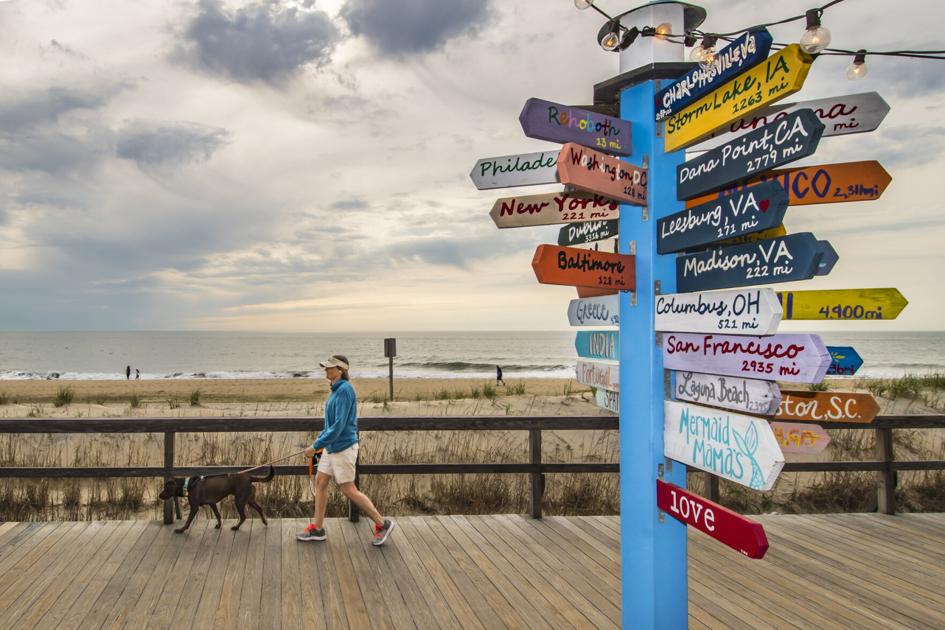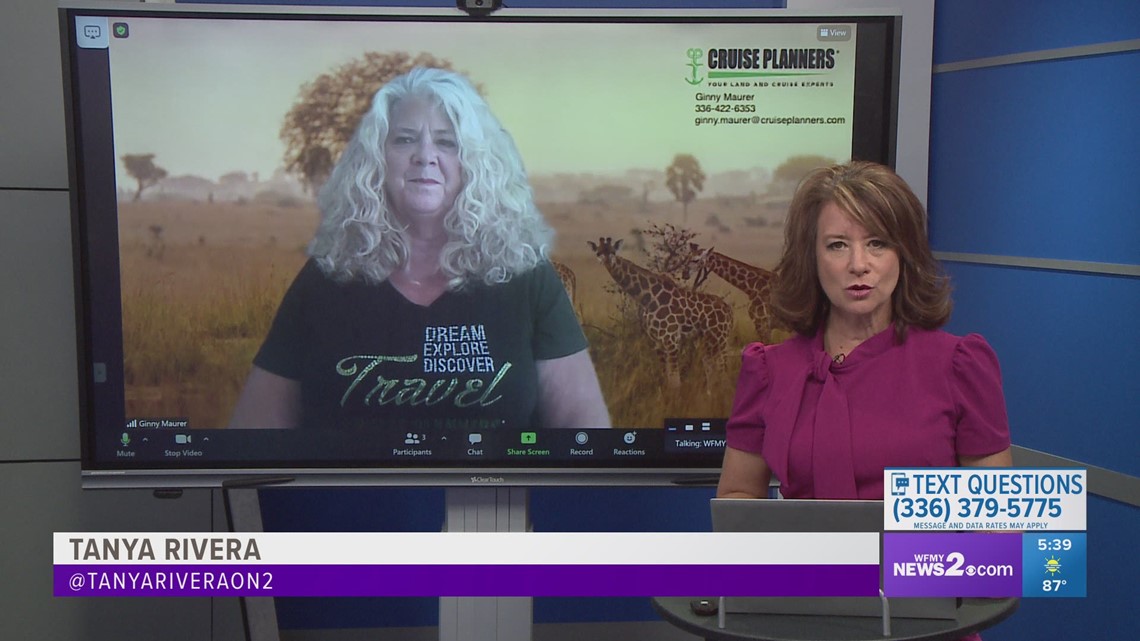Vaccine roll-out resulting in increased travel optimism | Coronavirus


Whether it’s to the beach or a national park on the other side of the country, AAA says Americans are increasingly likely to consider traveling in the coming months, now that COVID-19 vaccines are being given to the public.
One year after the COVID-19 pandemic upended plans for travelers in Delaware and throughout the world, there are new signs that travel dreams won’t be deferred, according to AAA.
The weekly survey, Coronavirus Travel Sentiment Index, conducted by Destination Analysts and released Monday, March 8, found that the majority of respondents say they are ready to travel. The survey, which tracks how Americans feel about the pandemic and the safety of traveling both currently and in the future, coincides with the steadily increasing requests for trip information being made to AAA travel agents, they noted.
“As the vaccine continues to roll out across the country, travel dreams are beginning to optimistically seem more realistic,” said Ken Grant, manager of public and government affairs for AAA Mid-Atlantic. “Well over half — 60 percent of Americans — say they will be traveling for leisure in the next three months, according to a survey done less than a week ago.”
Even more encouraging, he said, 84 percent of those surveyed have at least tentative plans to travel in 2021.
“The travel industry continues to see a parallel between the vaccine roll out and increased optimism among the traveling public, and a greater comfort level from travelers seeking to book for the summer or fall of this year,” said Grant.
How comfortable are people traveling and when? What about spring break?
When it comes to spring break for 2021, people seem to be holding off on travel and will be staying home, with just 14 percent of Americans planning to travel for spring break, according to the survey.
But beyond spring break, there is renewed optimism and a notable change in how safe people feel about travel activities. Last March/April, when the pandemic hit, only 30 percent of people surveyed felt safe traveling; now, 40 percent feel it is safe to do so. This comfort level is likely to continue to increase as more people are vaccinated, Grant said.
The Destination Analysts survey from Feb. 28 also revealed how travelers feel about when traveling will feel more “normal,” and their confidence has continued to increase as the months pass. A total of 36 percent said they believe travel activities will return to normal in the June-August time frame, while an even greater percentage, 42 percent, said they see fall as the travel sweet spot. In all, more than three quarters of those in the survey said they believe that by this fall travel will feel more like what they are accustomed to.
“Clearly, this summer and fall will see more people traveling, addressing their need to get away for a break from everyday stressors. AAA expects pent up demand and higher comfort levels among travelers to result in a surge of booking in the coming months,” Grant added. “Traveling dates will vary, according to destination and confidence, with some bookings for this summer and fall, and trips for 2022 and beyond.”
What is impacting the decision to travel? According to AAA:
- Continually increasing numbers of administered vaccinations;
- Increase level of comfort/safety by travelers;
- Pent up demand, the need for a break from COVID and other stressors; and
- Travel deals — 45 percent said that travel discounts make them more likely to travel in next three months (Destination Analysts)
“While the decision to travel is a personal one, those who are comfortable traveling will find some great deals as vacation destinations seek to lure travelers back,” Grant added.
Where are people going? AAA Travel agents report that:
- Top destinations include the Caribbean, Mexico and Florida, as travelers seek fun and sun;
- USA destinations — Rediscovering AMERICA continues to be a theme as it was last summer;
- Great American road trip — The resurgence of road trips, where travelers can control their personal space and enjoy the adventures of the U.S. is expected this year.
- National parks — Expected to be popular as they allow for family fun and social distancing.
What do travelers need to know as they confirm travel plans for 2021 and beyond?
- The CDC continues to urge Americans to delay traveling, warning that doing so increases the chance of getting and spreading COVID-19.
- Knowledge is more critical than ever when deciding when and where to travel. On March 1, for example, the CDC added Curacao, Antigua and Barbuda to Level 4: COVID-19 Very High status, warning that travelers should avoided all travel to these destinations. The Bahamas are also still on a Level 3: High designation, where travelers are advised to avoid all nonessential travel.
For those who choose to travel, current CDC guidelines and requirements include:
- Travel restrictions — State and local governments may have travel restrictions in place. Check the CDC’s travel planner linking to state and local health departments or refer to AAA’s COVID-19 Travel Restrictions Map and TripTik.AAA.com for the latest travel restrictions and to help determine which rest stops, gas stations, restaurants and hotels are open along the route if driving to the destination. Prepare to be flexible, as restrictions and policies may change during a trip.
- COVID-19 vaccines — If you are eligible, consider getting vaccinated for COVID-19. The CDC says to wait two weeks after getting your second dose to travel, for your body to build protection after vaccination. Even if you’ve been vaccinated, continue to follow all official travel requirements and guidelines.
- Testing — The CDC recommends taking a viral COVID-19 test one to three days before a trip. Do not travel if you test positive. Keep a copy of your negative test results with you during your trip, and make plans to get tested again with a viral test three to five days after you return. Self-quarantine for a full seven days after the trip, even if your test is negative. If you don’t get tested, the CDC advises staying home and self-quarantining for 10 days.
AAA urged travelers to:
- Be informed, use a travel agent — Free expert advice, especially while navigating the important and complex information during COVID, such as what destinations and attractions are open both domestically and internationally, destination-specific testing and quarantine requirements, and how what to do if you need to make last-minute changes to a trip, and much more.
- Plan ahead — Look ahead as much as practically possible, as some destinations will have limited capacity, thus demand could outpace supply.
- Make reservations and purchase tickets in advance — This prevents waiting in line, could allow for more social distancing, guarantees participation is confirmed, can prevent longer waits due to limited capacity. Examples: hotels, theme parks, national parks, etc.
- Use discounts available to you, whether they are AAA member discounts or others that may be available.
- Know your change/cancelation regulations, and travel insurance options.
What travelers can expect?
Whether planning a trip for spring break or summer, or dreaming of a trip later on, AAA Travel experts advised would-be travelers that things will look very different from the last time many took a vacation.
“The entire travel experience has been transformed by COVID-19. If you’re considering travel this year, it’s more important than ever to do your homework and be knowledgeable ahead of any trip to ensure both safety and pleasure,” said Grant. “As vaccines help boost consumer confidence to travel again, it’s still important to protect yourself and others, and it’s required in many areas to wear masks and socially distance.”
- Masks — Face coverings are required on planes, buses, trains and other forms of public transportation traveling into, within or out of the United States, and in U.S. transportation hubs, such as airports and stations. Outside of those transportation requirements, states, and some establishments, have mandates and/or restrictions on where and when masks must be worn.
- Auto — Road trips to domestic destinations continue to be the preferred way for many to travel, but even these trips require additional planning and preparation. Those who make the decision to travel by car can refer to AAA’s COVID-19 Travel Restrictions Map and TripTik.AAA.com for the latest state and local travel restrictions, and to identify which rest stops, gas stations, restaurants and hotels are open along their route. If renting a car, ask what has been done to clean the vehicle. Hertz, for example, has introduced Hertz Gold Standard Clean, an enhanced vehicle disinfectant and sanitization process. For extra peace of mind, use disinfecting wipes to wipe down door handles, steering wheels, shifters and control panels.
- Hotels — Prior to any hotel stay, call ahead to ensure the hotel is open and ask what precautions they are taking to protect guests. Ask about social distancing protocols, such as capacity reductions, hotel staff requirements to wear masks at all times and if all amenities are available, such as restaurant dining.
- Air — AAA cautioned air travelers that in-flight amenities, including food and beverage services, may be limited or unavailable. Some airlines continue to limit flight capacities or block middle seats to allow for social distancing. Due to COVID-19, TSA is allowing one oversized liquid hand sanitizer container, up to 12 ounces per passenger, in carry-on bags, rather than limiting those to 3.4 ounces. Masks are also required at airports and on planes.
- International air travel — All air passengers coming to the United States, including U.S. citizens, are required to have a negative COVID-19 test result or documentation of recovery from COVID‑19 before they board a flight to the United States. Travelers who don’t provide that to their airline will be denied boarding. There are no test requirements for domestic travel at this time, except in Hawaii, which has a testing requirement from the mainland and between the islands.
- Cruise — Even with the CDC’s no-sail order lifted, many cruise lines have voluntarily extended their suspension of sailing operations further into 2021. Anyone considering a future cruise vacation should consult with a travel professional to understand new safety protocols and cruising post COVID-19, AAA warned.








